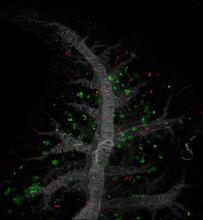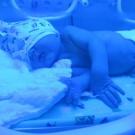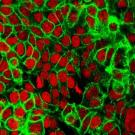News
UCSF Researcher Part of Consortium Awarded $7.5M to Evaluate Breast Imaging Strategies
Karla Kerlikowske, MD, a co-principal investigator of the Breast Cancer Surveillance Consortium(BCSC), is part of the team awarded $7.5 million by the Patient-Centered Outcomes Research Institute(PCORI) board of governors to determine the effectiveness of two supplemental breast screening and
Developments in Cancer Research and Care, from Prostate Cancer to Breast Cancer to Immunotherapy
Cancer specialists from UC San Francisco will share information on advances in research during the annual meeting of the American Society of Clinical Oncology (ASCO), one of the world’s most prestigious gatherings of oncology professionals. The meeting, which will be held June 3-7 in Chicago, is
A Slight Increase in Pediatric Cancer Risk Seen with Infant Phototherapy
Phototherapy, increasingly used to treat jaundiced infants, could very slightly raise the risk of pediatric cancers, particularly myeloid leukemia, according to epidemiological research published online on May 23 in Pediatrics. At very high levels, bilirubin, a byproduct of the normal breakdown of
Better Survival for Colon Cancer Patients with Left-Sided Tumors
The chances of surviving colon cancer could depend on which side of the colon the cancer strikes. A national study led by a UC San Francisco oncologist has found that patients with metastatic colon cancer that develops on the left side of the colon survive significantly longer than those with
Hybrid Cancer Drug Could Be Resistance-Resistant
A team of cancer researchers led by scientists at UC San Francisco and Memorial Sloan Kettering Cancer Center demonstrated in human cells and mouse models that a first-of-its-kind hybrid drug can outsmart drug-resistant cancers. The new drug physically yokes together two existing drugs against a
Trever Bivona, Pamela Ling Elected to American Society for Clinical Investigation
Five UC San Francisco faculty members have been elected to the American Society for Clinical Investigation (ASCI) after a highly competitive nomination process. The ASCI, which is one of the oldest medical honor societies in the United States, received 160 membership nominations for 2016 and
Laura Esserman Named to TIME 100 List of Most Influential People in the World
Time magazine has named internationally renowned breast cancer oncologist Laura Esserman, MD, MBA, to the 2016 TIME 100, the magazine’s annual list of the 100 most influential people in the world. Esserman has been at the forefront of efforts to change the delivery of breast cancer services as well








